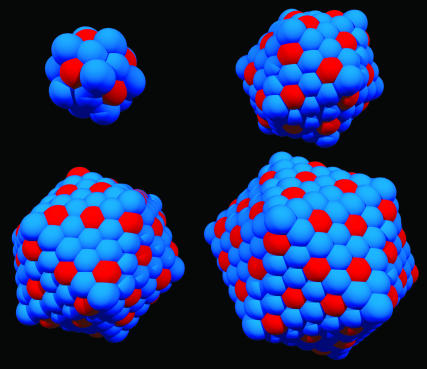Fig. 2.
Examples of charge distributions with spherical topology and icosahedral shape. From right to left, top to bottom, the number of particles N is 32, 132, 212, and 312 (T is 3, 13, 21, and 31), respectively, for 3:1 stoichiometric ratio (+3 charges are red, −1 charges are blue). Note that in the n = 32 (T = 3) case, the eight “+3” charges are on the vertices of a regular cube and not on a square antiprism as in the Thomson problem for eight charges on a sphere.

